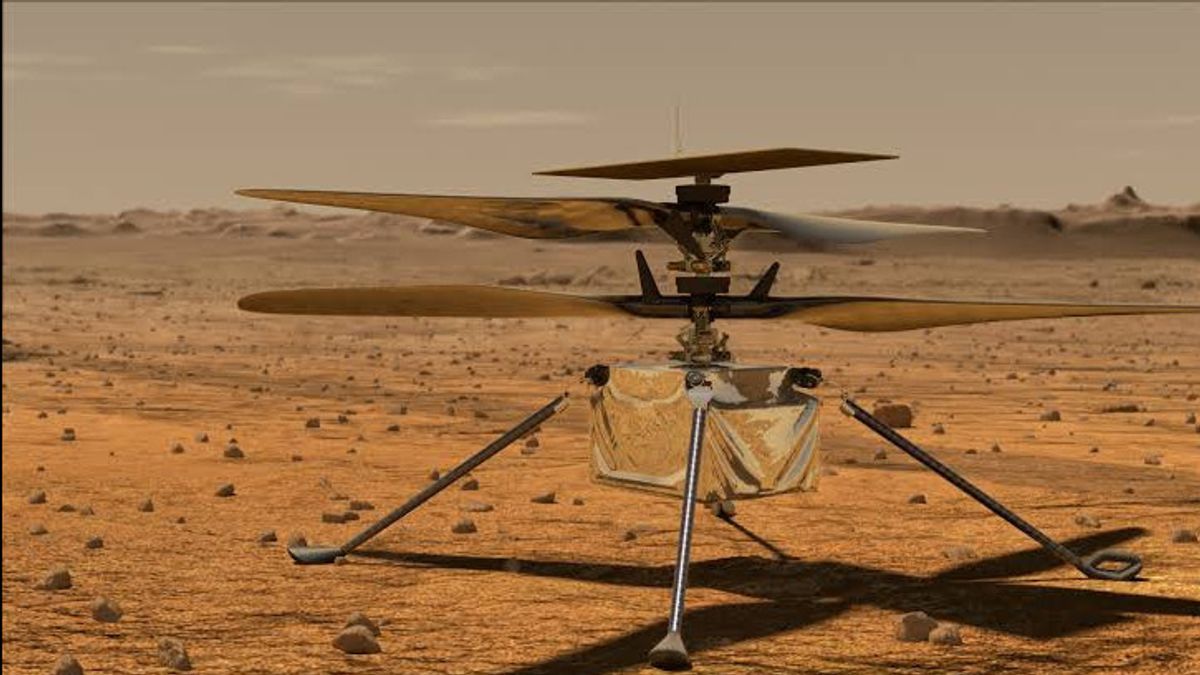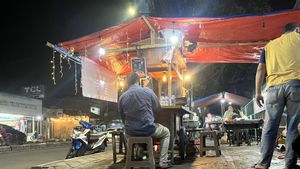JAKARTA - The planet Mars is indeed a planet completely covered in dust, but this can actually harm NASA's Ingenuity helicopter. Causing this little robot to miss the communication check-in schedule.
The incident occurred on May 3 and was caused by dust in the Martian atmosphere. This is because Mars is experiencing seasonal changes, so the amount of dust will automatically increase.
That dust can cover Ingenuity's solar panels, making them less effective. Because the solar panels were dusty, it was difficult for Ingenuity to charge its batteries. The helicopter had previously encountered this problem when a dust storm passed through the Jezero crater where it was exploring, and the helicopter had to shake off the dust before it could resume operations.
In last week's incident, dust prevented the battery from charging so part of the Field-Programmable Gate Array (FPGA) helicopter control system was turned off.
"When the battery charge state drops below the lower limit, the helicopter's field programmable gate array (FPGA) is turned off," said David Agle of NASA in a statement.
“The FPGA manages Ingenuity's operational state, enabling and disabling other avionics elements as needed to maximize power savings. It also operates a heater that allows the helicopter to survive frigid nights on Mars, maintains the spacecraft's precise timing, and controls when the helicopter is scheduled to wake up for a communication session with Perseverance."
Ingenuity is designed to turn components on and off during day and night cycles as needed. But when the FPGA shuts down unexpectedly, it will reset Ingenuity's onboard clock.
Then, as the sun rises and the sun begins to recharge its batteries again, the helicopter's timing is out of sync with Perseverance. This means that Ingenuity's attempt to contact Perseverance was at the wrong time, hence why it missed check-in.
Perseverance continued to listen for Ingenuity's check-in signal, and arrived on May 5 at 11:45 am local Martian time. Ingenuity was able to establish a radio link and say it was stable, at the right temperature, and that the battery was charging and that it was up to 41 percent capacity.
However, it will continue to be difficult for the helicopter to charge its batteries through the frigid Martian nights. This issue is not surprising, as Ingenuity was originally designed for only five flights but has so far made an incredible 24 flights.
As the mission length increased, the team knew that the changing seasons in the weather would create even greater challenges. To try and maintain Ingenuity for as long as possible, the team has sent a new command to the helicopter to lower the temperature when turning on its heaters.
This saves battery usage as the heater consumes a lot of power, but it exposes the helicopter hardware to risky cold temperatures.
Even so, if the hardware can last a few nights like this, the battery may be recharged enough so that the helicopter can fly once again. This is quoted from Digital Trends, Monday, May 9.
The English, Chinese, Japanese, Arabic, and French versions are automatically generated by the AI. So there may still be inaccuracies in translating, please always see Indonesian as our main language. (system supported by DigitalSiber.id)









